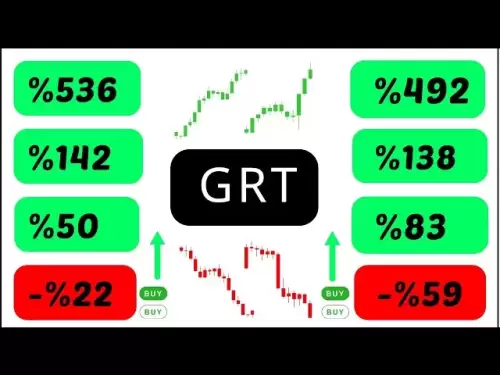-
 Bitcoin
Bitcoin $107,896.0459
2.21% -
 Ethereum
Ethereum $2,435.2616
0.04% -
 Tether USDt
Tether USDt $1.0004
-0.01% -
 XRP
XRP $2.2018
-0.04% -
 BNB
BNB $647.5191
0.76% -
 Solana
Solana $144.4128
0.58% -
 USDC
USDC $0.9999
-0.01% -
 TRON
TRON $0.2730
-0.32% -
 Dogecoin
Dogecoin $0.1660
1.16% -
 Cardano
Cardano $0.5723
-1.81% -
 Hyperliquid
Hyperliquid $37.4395
-0.04% -
 Bitcoin Cash
Bitcoin Cash $485.2395
7.09% -
 Sui
Sui $2.7770
0.33% -
 Chainlink
Chainlink $13.2388
-0.84% -
 UNUS SED LEO
UNUS SED LEO $9.0047
-0.11% -
 Stellar
Stellar $0.2431
-1.84% -
 Avalanche
Avalanche $17.7557
-1.65% -
 Toncoin
Toncoin $2.8566
-1.08% -
 Shiba Inu
Shiba Inu $0.0...01168
0.88% -
 Litecoin
Litecoin $84.9442
0.32% -
 Hedera
Hedera $0.1513
-1.26% -
 Monero
Monero $315.0784
-0.32% -
 Ethena USDe
Ethena USDe $1.0001
-0.04% -
 Polkadot
Polkadot $3.4120
-0.77% -
 Dai
Dai $0.9999
0.00% -
 Bitget Token
Bitget Token $4.3352
1.20% -
 Pi
Pi $0.6312
17.49% -
 Uniswap
Uniswap $6.9875
-0.83% -
 Pepe
Pepe $0.0...09694
-1.76% -
 Aave
Aave $259.5059
-1.43%
What does it mean when the price breaks through the upper track after the standard error channel narrows?
A narrowing standard error channel followed by a breakout above the upper boundary signals strong buying pressure and potential trend continuation in crypto trading.
Jun 25, 2025 at 10:57 pm
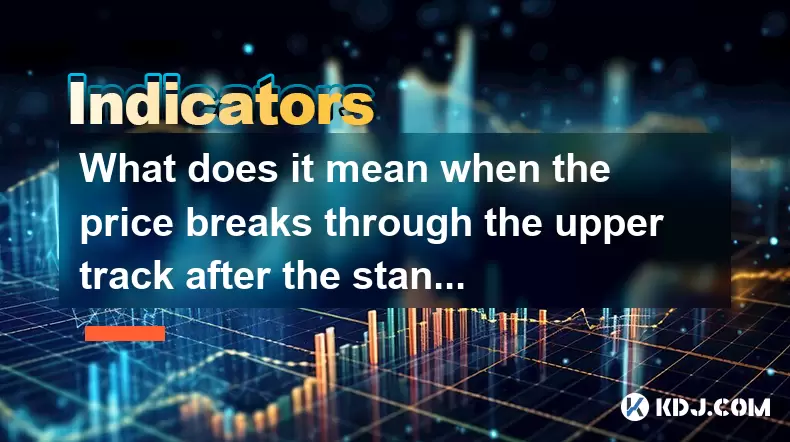
Understanding the Standard Error Channel in Cryptocurrency Trading
The standard error channel is a technical analysis tool used by traders to assess price volatility and potential breakout points. It consists of three lines: a central linear regression line, an upper boundary line, and a lower boundary line. These boundaries are calculated based on standard deviations from the regression line. In the context of cryptocurrency trading, where market swings can be rapid and dramatic, this indicator helps identify consolidation phases and possible trend reversals.
When the channel narrows, it typically reflects a period of low volatility. This compression suggests that the asset's price has been moving within a tighter range, often preceding a significant price movement. Traders closely monitor such patterns because they may signal an imminent breakout or breakdown.
What Happens When the Price Breaks Through the Upper Track?
A price break above the upper track of the standard error channel indicates that buying pressure has overwhelmed selling pressure after a period of consolidation. This event is considered bullish by many traders, especially if accompanied by increased volume. The breakout implies that market participants are pushing the price higher, potentially initiating a new uptrend.
In crypto markets, where sentiment plays a crucial role, such a breakout could be triggered by positive news, strong fundamentals, or macroeconomic factors. For example, a major exchange listing, regulatory approval, or favorable blockchain upgrade announcements can cause prices to surge past resistance levels like the upper channel boundary.
Interpreting the Narrowing Phase Before the Breakout
The narrowing of the standard error channel before the breakout is a key element to consider. During this phase, price action becomes increasingly confined between the upper and lower bands. This contraction is often interpreted as a sign of indecision among traders, with neither buyers nor sellers gaining control.
In the crypto market, this phase might coincide with sideways movement following a sharp rally or decline. Volume usually diminishes during this time, reinforcing the idea that the market is taking a breather before the next directional move. Recognizing this pattern early allows traders to prepare for a potential breakout.
How to Confirm a Valid Breakthrough Above the Upper Boundary
Not every breakout leads to a sustained trend. Therefore, confirming the validity of the breakout is essential for risk management. Here’s how traders can verify a genuine move:
- Watch for candlestick confirmation: A close above the upper band, rather than just a wick touching it, is more reliable.
- Volume check: An increase in trading volume during the breakout supports the strength of the move.
- Multiple timeframe analysis: Checking higher timeframes (like 4-hour or daily charts) can help confirm whether the breakout aligns with broader trends.
- Avoid false breakouts: Sometimes, prices spike above the channel only to fall back in—these are traps set by market makers or algorithms.
Traders should also look at other indicators such as RSI or MACD to support their decision-making process when evaluating the breakout.
Trading Strategy Based on This Pattern
Once a valid breakout is confirmed, traders can structure a strategy around it. Here’s a detailed approach:
- Entry point: Enter long positions once the price closes convincingly above the upper channel line.
- Stop-loss placement: Set stop-loss orders slightly below the recent swing low or the upper channel line itself, depending on risk tolerance.
- Take-profit targets: Use previous resistance levels, Fibonacci extensions, or measure the height of the narrowing channel and project it upward from the breakout point.
- Position sizing: Adjust trade size according to account risk parameters and the distance to the stop-loss.
In volatile crypto markets, it’s wise to trail the stop-loss to lock in profits as the price continues to rise. Using trailing stops or partial profit-taking techniques can enhance returns while minimizing downside exposure.
Common Pitfalls and How to Avoid Them
Despite its usefulness, the standard error channel isn't foolproof. Some common mistakes include:
- Entering too early: Jumping into a trade before the breakout is confirmed can lead to losses if the price fails to sustain the move.
- Ignoring volume: A breakout without volume support is often short-lived and unreliable.
- Overlooking context: A breakout in isolation doesn’t guarantee success; always consider the broader market environment and news events.
- Failing to manage emotions: Fear of missing out (FOMO) can push traders to chase entries at poor levels.
By staying disciplined and using a checklist for each trade, traders can avoid these pitfalls and improve their chances of success when trading breakouts from a narrowing standard error channel.
Frequently Asked Questions
Q1: Is the standard error channel the same as Bollinger Bands?
No, although both tools use standard deviation, the standard error channel includes a linear regression line as its centerline, whereas Bollinger Bands use a simple moving average. Their calculation methods and visual representations differ.
Q2: Can this pattern be applied to all cryptocurrencies?
Yes, the standard error channel is applicable across various assets including Bitcoin, Ethereum, altcoins, and even traditional financial instruments. However, the effectiveness may vary depending on liquidity and market conditions.
Q3: Should I rely solely on this pattern for trading decisions?
It's not advisable to base trades solely on one indicator. Combining the standard error channel with other forms of analysis—such as volume, candlestick patterns, and fundamental developments—can provide a more robust trading framework.
Q4: What timeframes work best with this pattern?
While it can be applied to any timeframe, intraday traders often use it on 1-hour or 4-hour charts, whereas swing traders prefer daily or weekly charts for clearer signals.
Disclaimer:info@kdj.com
The information provided is not trading advice. kdj.com does not assume any responsibility for any investments made based on the information provided in this article. Cryptocurrencies are highly volatile and it is highly recommended that you invest with caution after thorough research!
If you believe that the content used on this website infringes your copyright, please contact us immediately (info@kdj.com) and we will delete it promptly.
- Ethereum, ZK-Powered Bridges, and Cross-Chain Liquidity: A New Era?
- 2025-06-26 02:45:13
- Ruvi AI: The Breakout Star That Could Outshine Tron in 2025?
- 2025-06-26 02:45:13
- XRP Whales: Accumulation vs. Stalled Momentum - What's the Deal?
- 2025-06-26 02:50:12
- Moca Chain: The Layer 1 Blockchain Revolutionizing Digital Identity
- 2025-06-26 02:27:14
- Mega Matrix, Bitcoin, and Treasury Strategy: A New Era of Corporate Finance
- 2025-06-26 02:55:12
- SBI's QIP Issue: A Token of Prestige for Lead Arrangers
- 2025-06-26 02:31:57
Related knowledge
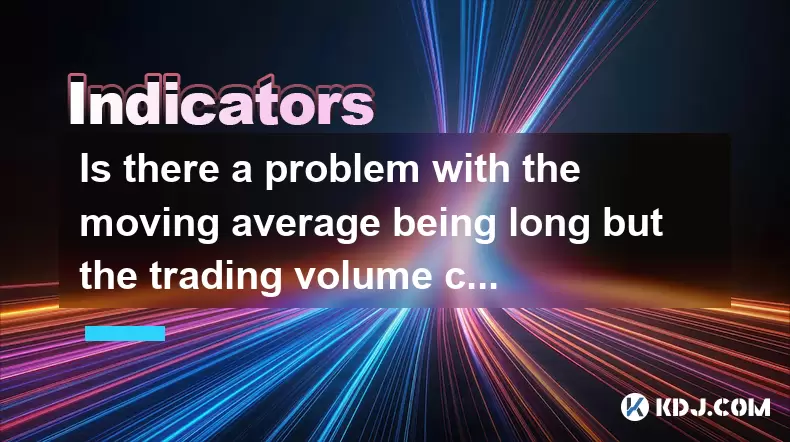
Is there a problem with the moving average being long but the trading volume continues to decline?
Jun 26,2025 at 02:42am
Understanding the Concept of Moving Averages in Cryptocurrency TradingIn cryptocurrency trading, moving averages are one of the most commonly used technical indicators. They help traders identify trends by smoothing out price data over a specific period. When the moving average is described as 'long,' it typically refers to longer timeframes such as the...
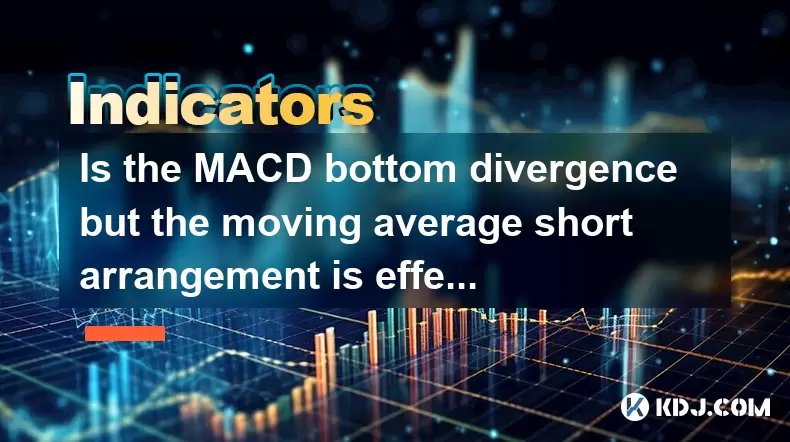
Is the MACD bottom divergence but the moving average short arrangement is effective?
Jun 26,2025 at 02:01am
Understanding MACD Bottom DivergenceMACD bottom divergence is a technical analysis concept used to identify potential trend reversals in cryptocurrency price charts. When the price makes a lower low, but the MACD line forms a higher low, it suggests that downward momentum is weakening, potentially signaling a bullish reversal. In the context of cryptocu...
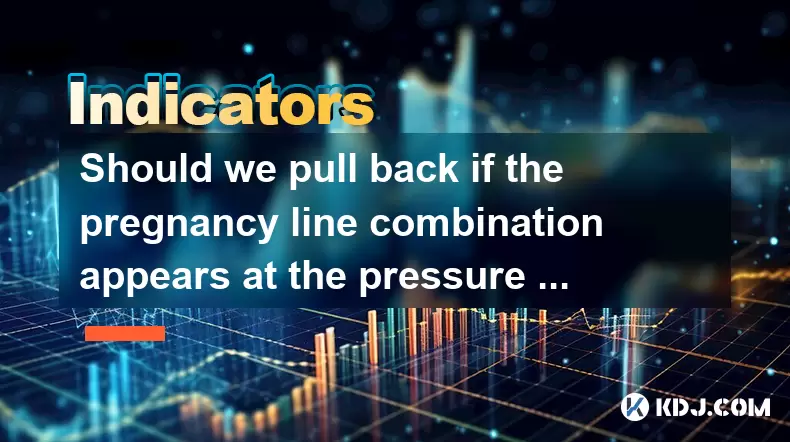
Should we pull back if the pregnancy line combination appears at the pressure level?
Jun 26,2025 at 03:00am
Understanding the Pregnancy Line in Technical AnalysisThe pregnancy line, also known as the Harami pattern, is a significant candlestick formation used by traders to identify potential reversals or continuations in price trends. This pattern consists of two candles: the first being a large-bodied candle, and the second a smaller-bodied candle that is co...

Can we buy the bottom when the volume is reduced and the price is pulled back to the support level?
Jun 26,2025 at 02:15am
Understanding the Concept of Buying the BottomThe idea of buying the bottom refers to entering a trade at what appears to be the lowest point in a price decline. In the context of cryptocurrency trading, this often involves analyzing support levels, price pullbacks, and volume behavior to identify potential reversal points. Traders seek to purchase asse...
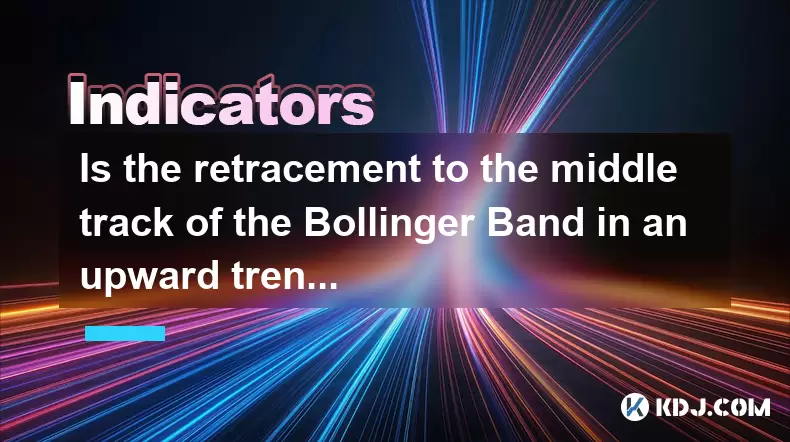
Is the retracement to the middle track of the Bollinger Band in an upward trend a buying opportunity?
Jun 26,2025 at 03:15am
Understanding the Role of Smart Contracts in Decentralized Finance (DeFi)Smart contracts are self-executing agreements with the terms directly written into code. These contracts automatically execute actions when predetermined conditions are met, eliminating the need for intermediaries. In decentralized finance (DeFi), smart contracts form the backbone ...

Is the long Yin followed by a shrinking cross star in a downward trend a downward relay?
Jun 26,2025 at 02:21am
Understanding the Long Yin Candlestick PatternIn technical analysis, the long Yin candlestick pattern is a bearish signal that typically appears during a downtrend. It features a long red (or black) body with little to no upper or lower shadows, indicating strong selling pressure throughout the trading session. This pattern reflects intense bear dominan...

Is there a problem with the moving average being long but the trading volume continues to decline?
Jun 26,2025 at 02:42am
Understanding the Concept of Moving Averages in Cryptocurrency TradingIn cryptocurrency trading, moving averages are one of the most commonly used technical indicators. They help traders identify trends by smoothing out price data over a specific period. When the moving average is described as 'long,' it typically refers to longer timeframes such as the...

Is the MACD bottom divergence but the moving average short arrangement is effective?
Jun 26,2025 at 02:01am
Understanding MACD Bottom DivergenceMACD bottom divergence is a technical analysis concept used to identify potential trend reversals in cryptocurrency price charts. When the price makes a lower low, but the MACD line forms a higher low, it suggests that downward momentum is weakening, potentially signaling a bullish reversal. In the context of cryptocu...

Should we pull back if the pregnancy line combination appears at the pressure level?
Jun 26,2025 at 03:00am
Understanding the Pregnancy Line in Technical AnalysisThe pregnancy line, also known as the Harami pattern, is a significant candlestick formation used by traders to identify potential reversals or continuations in price trends. This pattern consists of two candles: the first being a large-bodied candle, and the second a smaller-bodied candle that is co...

Can we buy the bottom when the volume is reduced and the price is pulled back to the support level?
Jun 26,2025 at 02:15am
Understanding the Concept of Buying the BottomThe idea of buying the bottom refers to entering a trade at what appears to be the lowest point in a price decline. In the context of cryptocurrency trading, this often involves analyzing support levels, price pullbacks, and volume behavior to identify potential reversal points. Traders seek to purchase asse...

Is the retracement to the middle track of the Bollinger Band in an upward trend a buying opportunity?
Jun 26,2025 at 03:15am
Understanding the Role of Smart Contracts in Decentralized Finance (DeFi)Smart contracts are self-executing agreements with the terms directly written into code. These contracts automatically execute actions when predetermined conditions are met, eliminating the need for intermediaries. In decentralized finance (DeFi), smart contracts form the backbone ...

Is the long Yin followed by a shrinking cross star in a downward trend a downward relay?
Jun 26,2025 at 02:21am
Understanding the Long Yin Candlestick PatternIn technical analysis, the long Yin candlestick pattern is a bearish signal that typically appears during a downtrend. It features a long red (or black) body with little to no upper or lower shadows, indicating strong selling pressure throughout the trading session. This pattern reflects intense bear dominan...
See all articles























